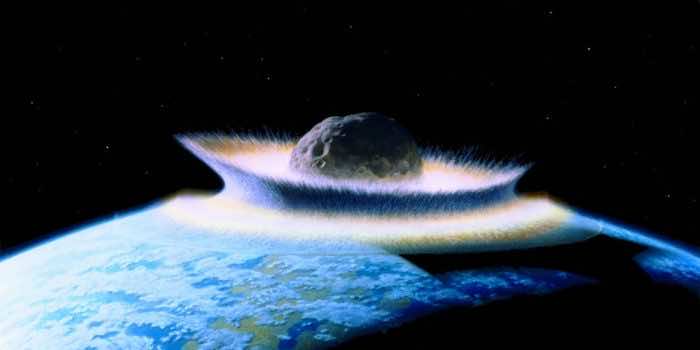A tiny shard of the asteroid that struck Earth 66 million years ago and destroyed the dinosaurs have been found trapped in amber.

It’s one of the numerous incredible discoveries from a unique fossil site in North Dakota’s Hell Creek Formation that has preserved relics of the cataclysmic event that terminated the dinosaur era – a watershed moment in the planet’s history.

“It gives a moment-by-moment story of what happens right after impact, and you end up getting such a rich resource for scientific investigation,” DePalma told the news outlet.
“In that amber, we’ve located several spherules that were basically frozen in time. They’re perfectly preserved.”
Fish that sucked in debris shot out during the strike, a turtle impaled with a spear, and a leg that could have belonged to a dinosaur that observed the asteroid strike.

The findings are told in a new documentary called “Dinosaur Apocalypse,” which stars naturalist Sir David Attenborough and paleontologist Robert DePalma and airs this week on the PBS show “Nova.”
However, a CNN article outlines how the shard was discovered and how it links to the extinction of dinosaurs.

According to CNN, micro amber shards containing vaporized asteroid dust were discovered in the Hell Creek Formation in the Western United States. Experts believe that it preserved a portion of the disastrous event due to its closeness with the area.
The amber-encased spherules’ research has yet to be published in a peer-reviewed journal.
DePalma said they intend to confirm what the asteroid was built of and where it came from, efforts that have gained NASA’s notice; DePalma presented his results at NASA’s Goddard Space Flight Center in Greenbelt, Maryland, last month.
“This example of what might be a little tiny fragment, maybe micrograms, of the colliding asteroid — the fact that a record of that is preserved would be mind-blowing,” said Goddard Chief Scientist Jim Garvin, who studied impact cratering on Earth and Mars.


